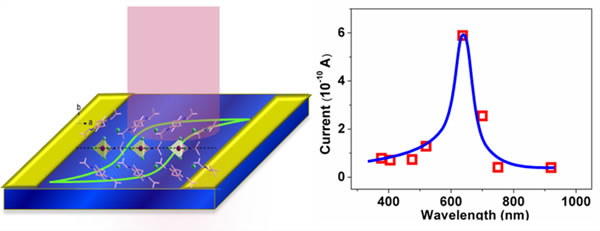Ferroelectric materials have a wealth of nonlinear optical, piezoelectric, pyroelectric, ferroelectric and photovoltaic properties. Recently, inorganic-organic hybrid ferroelectric materials have received much attention because of their potential applications in the field of optoelectronics. Existing hybrid ferroelectric materials are limited by their band gap structure, and often exhibit a broad-spectrum optical response. However, in view of the important applications of band-selective detection in monitoring, fluorescence microscopy, and national defense, how to achieve spectrally selective optical response is an important issue that needs to be resolved in the research of inorganic-organic hybrid ferroelectric materials.
Luo Junhua, a researcher of inorganic optoelectronic functional crystal materials at the State Key Laboratory of Structural Chemistry at the Fujian Institute of Research on the Structure of Matter, Chinese Academy of Sciences, is a key project of the National Natural Science Foundation of China, the National Outstanding Youth Fund and Researcher Sun Zhihua. Under the support of the Pioneer Science and Technology Project, an inorganic-organic hybrid ferroelectric crystal material was built using flexible organic amine cations and CoCl42-inorganic bone framework. The study found that the twisting of the CoCl42-inorganic framework in the compound and the ordering of organic cations synergistically induced the ferroelectric properties of the compound, exhibiting a high Curie temperature (378 K) and obvious ferroelectric spontaneous polarization. Conducive to the effective separation of carriers. At the same time, the unfilled d-orbital electrons of Co2 + in the inorganic framework tetrahedral CoCl42- undergo a dd transition between the 4A2 ground state and the 4T1 (P) excited state, showing strong characteristic light absorption at 550-700nm. The photoelectric test revealed that the material has a significant photoconductive effect in the characteristic absorption band and exhibits a spectrally selective photoelectric response. This work provides a new strategy for the development of highly efficient spectrally selective ferroelectric self-driven photoelectric detection materials. Related research results were published in the "German Applied Chemistry" in the form of communication. The work was highly evaluated by reviewers and was selected as the journal's VIP (Very Important Paper) article; assistant researcher Ji Chengmin was the first author of the paper.

Inorganic-organic hybrid ferroelectric crystal material with spectrally selective photoelectric response
Feton Corporation , https://www.ftplantled.com